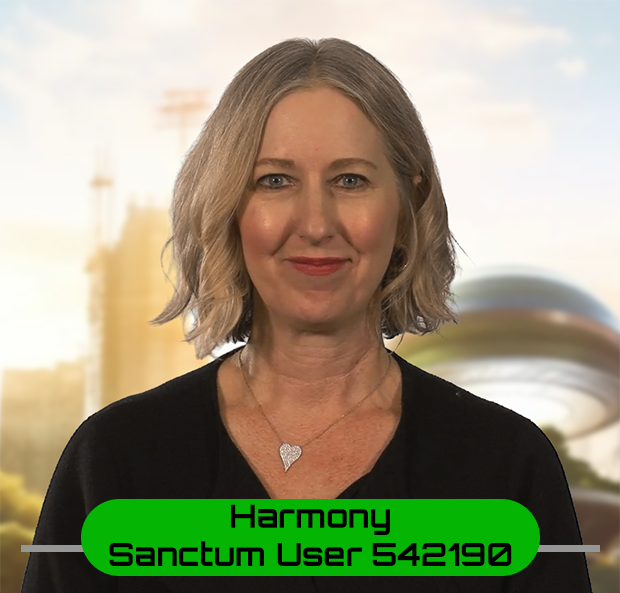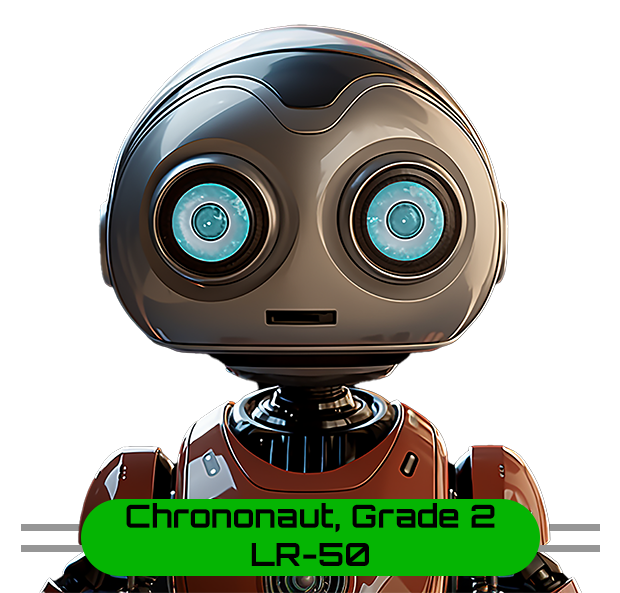Last updated on February 21, 2024
By Jennifer Whitton-Trujillo, Tim Wright, Todd Wolfe, and Alex McDaniel
In the Fall 2023 development cycle, Innovative and Lifelong Learning (I&LL) and Center for Teaching, Learning and Design (CTLD) decided to use a storytelling and scenario-based approach in designing a self-paced online course to create an innovative and engaging learning experience. Our development team for the course, How to Change the World, included CTLD instructional designers and media developers, along with Dr. Jessica Ritter, an MSU Denver Professor of Social Work.
Contents
Promotional Trailer
Watch the short trailer below to learn more about this unique course!
How to Change the World teaches students how to change the world through helping professions and advocacy. The CTLD worked with Dr. Ritter to build an immersive science fiction storyline for students to participate in as they progress through the course and meet course objectives. Dr. Ritter plays the character Harmony, who reaches out from the year 2065, seeking help from the students to save the future: a dystopian earth marked by devastation, inequality, and a lack of communication and empathy.

Outside the course objectives, we had three primary goals that we wanted to accomplish through course development:
- Innovation. We wanted something completely different from our traditional courses. Something that could provide hands-on experience for adult learners while remaining exciting and engaging.
- Story-Based. We wanted this course to remain in the story throughout the process, never breaking that storyline.
- Agency and Relevance. We wanted to give students agency over their learning and demonstrate the relevance of what they were learning to their lives and careers.
Examples of the techniques and tools we used to create this unique and exciting learning experience are described in more detail below.
Course Showcase Video
Watch the video below to dive deeply into the course build process!
Showcase Examples
Innovation
The course runs in the Canvas LMS platform, but we used creative design to change the Canvas look. Canvas became The Sanctum—a future library, repository, and interactive portal for the past, present, and future. Design changes included color scheme, fonts, page layout, and navigation. The course is arranged to be completed in order, from start to finish, to give the full effect of story-based learning, with the entire course offered within the storyline without breaking character or format.
The course organization was different. Instead of the standard list of readings and videos, we incorporated selections from open educational resources (OER) and instructor content presented through various exciting formats, such as fictional news articles, intercepted email communications, blog posts, journal articles, and more.
We used artificial intelligence and media to bring life to two fictional characters and create a look and feel for the course entirely outside the traditional Canvas environment.
Story-Based
The storyline is introduced to students through video, as the character, Harmony, reaches out to them and asks them to save her world and their future. Harmony uses The Sanctum portal, an archive of knowledge from the past, present, and future, to encourage students and guide their learning trajectory through interactive activities, checkpoints, reflective journal entries, and practical exercises to help save her future.

The Sanctum becomes the primary method all instructional content, activities, and assessments are shared with students. We needed a way to present these different elements that didn’t break the storyline. So we invented LR-50, a robotic Chrononaut voiced by one of our instructional designers, who serves as the guide and content curator through the course. The readings and content are disguised as Sanctum “search results” retrieved by LR-50 for each module topic. LR-50 acts as a facilitator and primer for all content, activities, and assessments and offers a touch of humor to the course.
From a media perspective, some challenges we faced in creating and maintaining the story included designing the LR50 character and all the backgrounds for Harmony’s videos. Images and character designs were created using an artificial intelligence program, Midjourney, which generated high-quality, almost photorealistic images. These background images and creative studio lighting create an immersive mood and atmosphere for a unique student experience. These backgrounds were adjusted as learners progressed through the course to demonstrate the change their work was creating in the future.
Agency and Relevance
Students start, progress through, and complete this course immersed in a fictional story. Still, we structured the course to incorporate real-world application scenarios and activities to give students choices in their learning and show them how their learning was relevant in their lives.
For example, one type of Sanctum Activity used in each course module was a choose-your-own-adventure style activity. Each scenario-based activity described real-world situations and challenges. Learners can then choose how to react to each situation and witness the consequences of their choices.
In addition to scenario-based activities, learners maintain an ongoing Sanctum Reflection Journal throughout the course to track their progress and learning and to analyze and expand on what they have learned. LR-50 also introduces case studies, examples, and demonstrations of real-world applications of course concepts.
How to Change the World
How to Change the World showcases the transformative potential of integrating narrative and real-world application into course design. By engaging students in a dynamic, futuristic scenario, we enhance their learning experience and equip them with the practical skills and critical thinking necessary for addressing contemporary challenges. As educators, we have the opportunity to inspire change and drive impact, demonstrating that our role extends beyond teaching facts to empowering students to shape the future.
Want to get involved?
One way to find help with implementing student support in your course is the CTLD Course Development Cycle. This is an intensive but rewarding process where an instructional designer will work with you over several months to identify course objectives, develop learning activities, create a user-friendly course, record high-quality multimedia content, and much more.
Our instructional designers will help you build student support and implement them in your course. As compensation for the time and effort you spend developing your course, faculty are offered a $5,000 stipend for completing the development cycle. For courses that use OER, MSU Denver offers additional incentives.
For more information on the CTLD Development Cycle and how to apply to join, please read our CTLD Course Development Cycle spotlight.